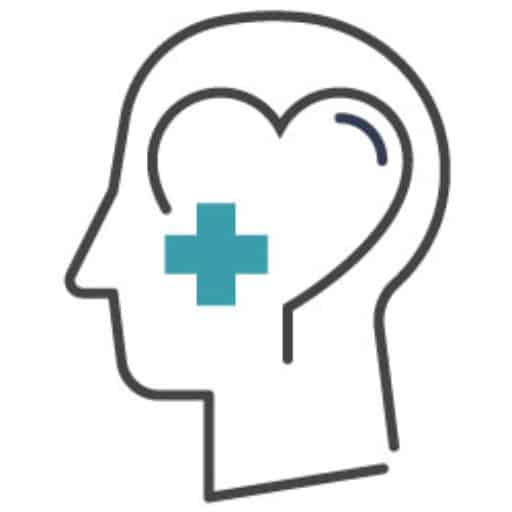You may have read about the practice of a “dopamine cleanse” in mental health-related content online. The term might sound catchy, but it’s really shorthand for taking breaks from certain activities to support your well-being.
With smartphone addiction on the rise, a dopamine detox plan could sound appealing. In fact, one study revealed that 56.7% of participants were addicted to their phones. Some internet users are starting to wonder if it’s time to make a change.
Content creators often make outlandish claims about dopamine detoxification, so it can be hard to know whether the practice is worth considering or a potentially harmful fad. Below, we’ll explore everything you need to know about this trend.
What Is a Dopamine Cleanse?
Psychiatrist Dr. Cameron Sepah came up with the concept of dopamine detoxing, also known as dopamine fasting. Sepah theorized that reducing exposure to potentially unhealthy stimuli from technology, such as constant social media updates or emails, could help manage addictive behaviors around devices and reduce compulsive activities.
Engaging with technology isn’t addictive in itself, but instant access to social networks releases dopamine in the brain whenever we experience positive stimuli. Events such as receiving likes on social media or messages from friends or family can cause this kind of dopamine spike. In turn, this makes us more responsive to online stimuli and more likely to repeat the behavior.
Sepah suggests taking a break from technology to help halt unhealthy behavior cycles and achieve a more balanced lifestyle. Addressing your tech usage could be worth considering if you regularly engage in compulsive online behaviors. These might include gambling, gaming, shopping or even finding it hard to switch off from your online social circles. To help you make healthy choices, it’s important to learn what a dopamine detox can and can’t do.
Understanding Dopamine and Its Role in the Reward System
Dopamine is a neurotransmitter produced in the brain that forms an important part of the reward system. This system encourages us to engage in behaviors we need to survive and thrive. For example, your brain releases dopamine when you eat to motivate you to repeat the behavior.
This sudden rush of dopamine creates a feeling of pleasure. This can be helpful if you’re doing something healthy, but it can also create harmful habits. For instance, experiencing a dopamine hit when you eat high-sugar, high-fat foods can make you more likely to continue eating them.
Dopamine also helps control other vital functions, such as sleep, learning and arousal. Therefore, having too much or too little dopamine can cause issues with your mood, sleep patterns and sex drive. Certain medical conditions can affect how much dopamine your brain produces.
Breaking Free From Overstimulation
Unfortunately, many people misunderstand the idea of a dopamine detox. Sepah intended a dopamine cleanse to encourage people to live more mindfully and engage in healthy, real-life activities that could enhance well-being. For instance, spending less time using technology could make it easier to exercise, get outdoors and engage meaningfully with loved ones.
It’s a common myth that a dopamine detox lowers your dopamine levels. Some people deliberately deprive themselves of pleasurable activities to reduce their tolerance to dopamine. They’re trying to build up their dopamine stores so the avoided activity becomes more enjoyable — it’s a little like taking a break from illegal drugs to make the next hit more intense.
This isn’t how dopamine works. Dopamine levels remain fairly constant in your brain unless you experience rewarding stimuli or have a health condition that affects production of the neurotransmitter. In other words, avoiding enjoyable activities won’t reduce dopamine levels in the brain or make an activity more enjoyable in the future.
The Myth of the Dopamine Detox
The term “dopamine detox” is misleading. Dopamine isn’t a toxic substance that you need to remove from your body. In fact, dopamine is an essential neurotransmitter that produces positive feelings and keeps your system running efficiently. If you somehow removed all the dopamine from your brain, you’d struggle to function.
You can also get dopamine from positive behaviors, such as exercising, eating vegetables, spending time outdoors, overcoming a challenge and hanging out with friends. Even enjoying the sunlight for a moment could trigger a hormone release. To eliminate your dopamine, you’d have to abandon everything that makes you happy. This isn’t a detox; it’s a ticket to wasting your life.
Plus, dopamine isn’t the only neurotransmitter that produces “happy chemicals.” If you wanted a true dopamine cleanse, you’d also have to eliminate your oxytocin, serotonin, endorphins and other hormones. Without these neurotransmitters, you’d feel depressed instead of refreshed.
Benefits and Potential Risks of Dopamine Detoxing
While a true dopamine cleanse is virtually impossible, deliberately avoiding using your smartphone and other devices for set periods can allow time for healthier habits. It can also break the addictive cycle of spending hours glued to your phone scrolling social media or consuming online content. Problematic smartphone use is also associated with higher stress levels, so cutting back could help restore calm when used with other stress-reduction techniques.
Decreasing your screen time also reduces your exposure to blue light from your phone, tablet or computer monitor, especially if you avoid these devices before bedtime. Research shows that blue light can negatively impact the quality and duration of sleep, which could make it harder to enjoy a fulfilling lifestyle during the day.
However, a dopamine detox could be risky if you attempt the more extreme versions of the trend. Sepah’s original vision was to provide a way of disconnecting from maladaptive tech use habits, but some people extend the premise beyond technology. Online dopamine detox fads can be bizarre, inconvenient and unhealthy, such as avoiding flash photography and cutting out activities like talking, eating and spending time with others.
These extreme detox fads are based on faulty science, because avoiding enjoyable activities won’t affect your baseline dopamine levels. They could also cause significant harm — abstaining from healthy social interactions and other essential activities could lead to physical or psychological problems.
How to Do a Dopamine Detox
If you still want to try a dopamine cleanse, the best method for you depends on your schedule and lifestyle. Some people find it helpful to switch off their smart devices for a few hours each day to allow them to focus on activities that enhance their well-being. Alternatively, you could try taking a break from technology for an entire day each weekend or going on a longer vacation without using your smartphone or computer.
Overall, a dopamine detox plan should cause minimal disruption, and you shouldn’t consider cutting out beneficial real-life activities. If a break from technology doesn’t help or you experience ongoing mood, stress or sleep issues, consider reaching out to a loved one or health care provider for support.
Get Help Today
When used sensibly, a dopamine detox can be a valuable tool for reducing stress and achieving a more balanced lifestyle. However, it doesn’t replace proven mental health treatments and strategies. If you’re experiencing mental health difficulties, the experts at Restore are ready to help. Contact us today to explore your options with a member of our team.



